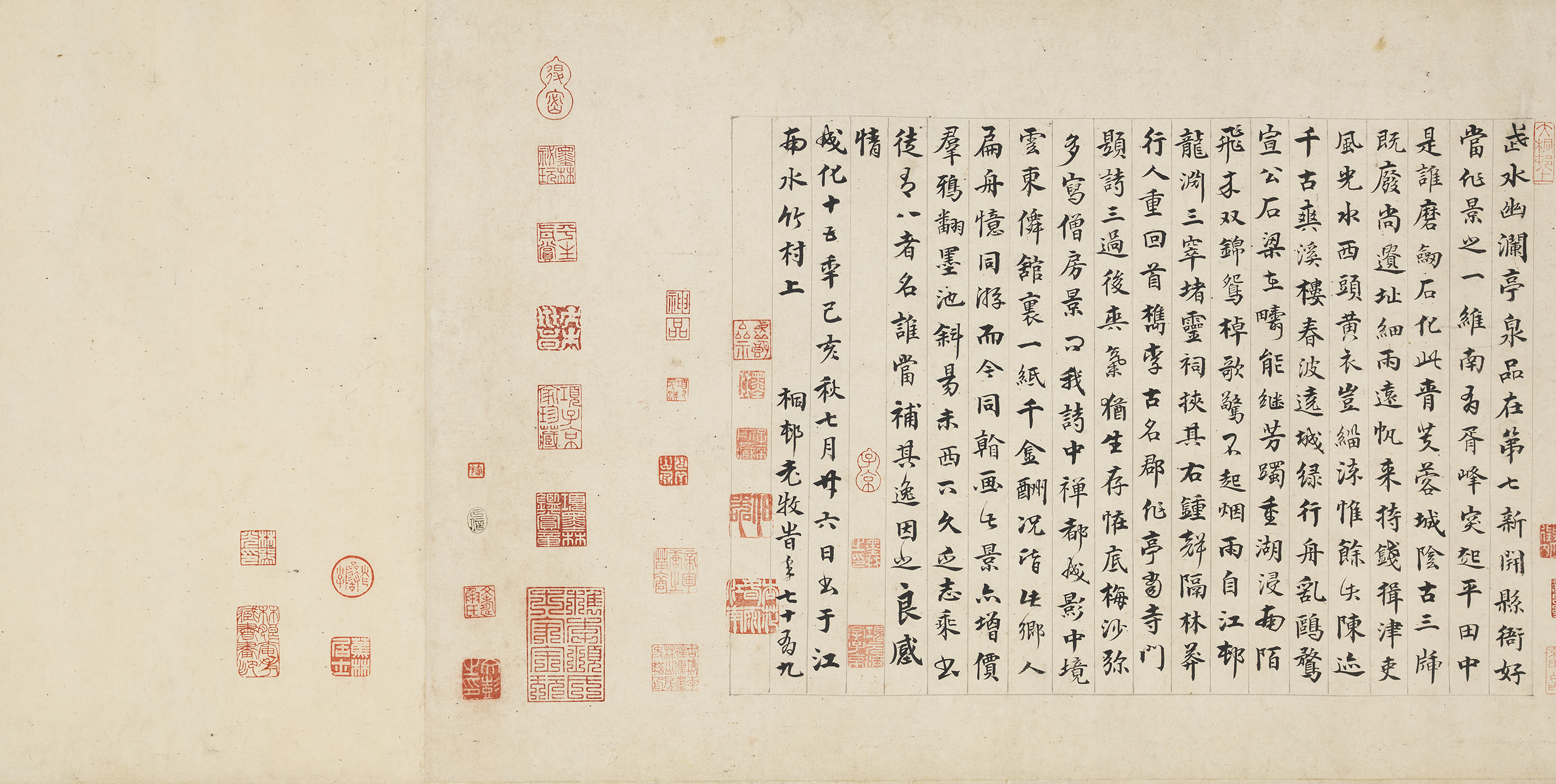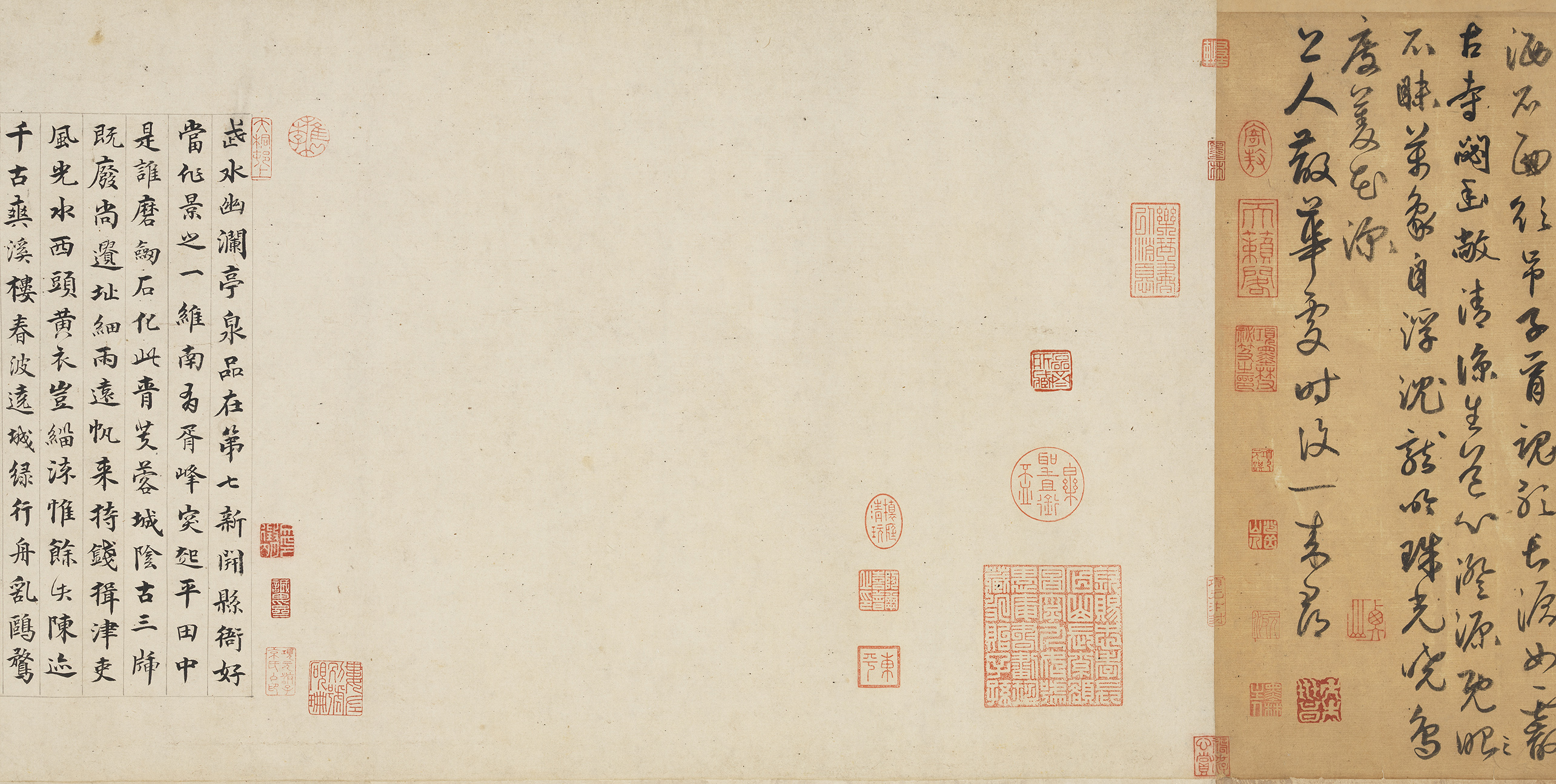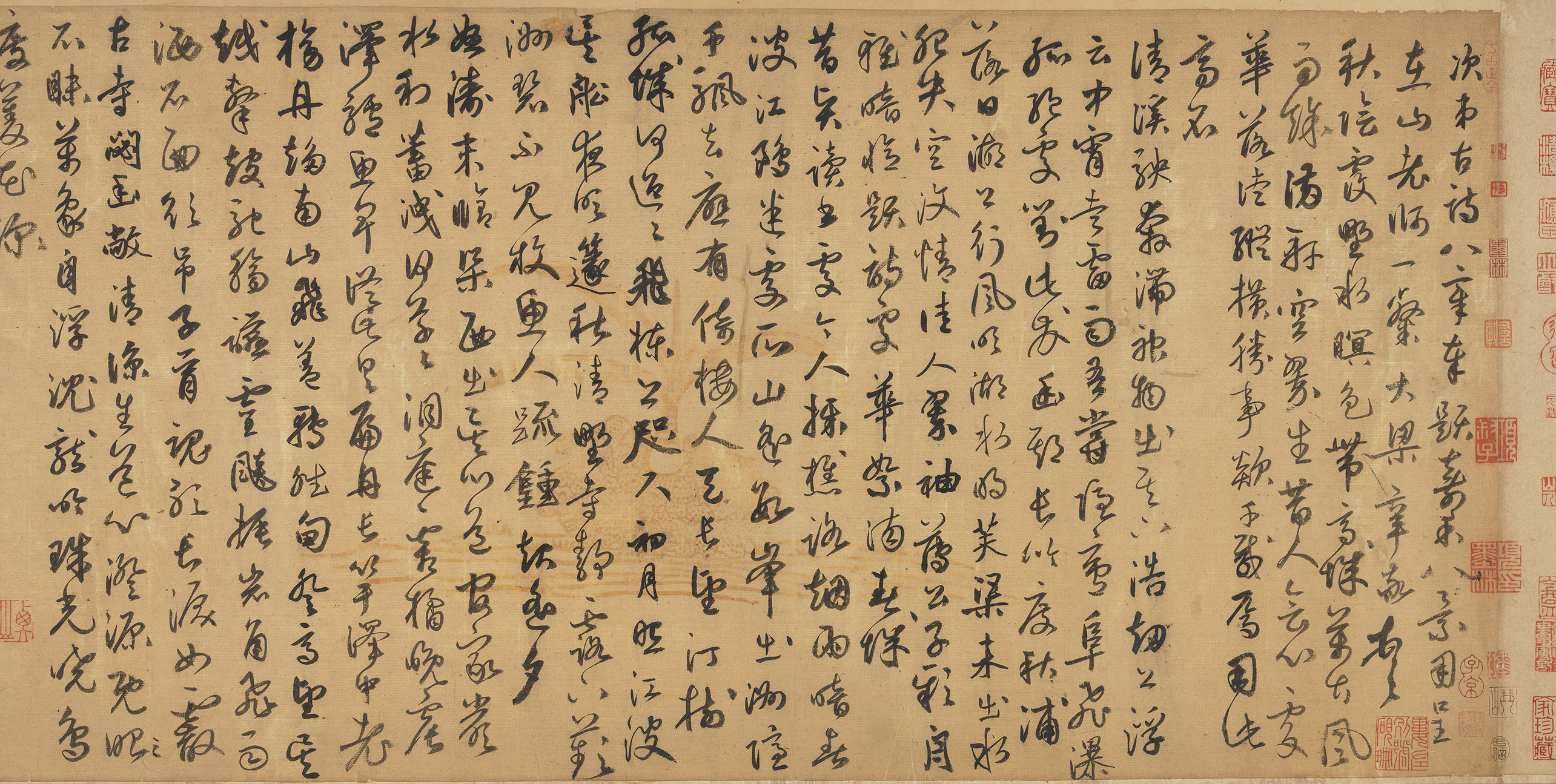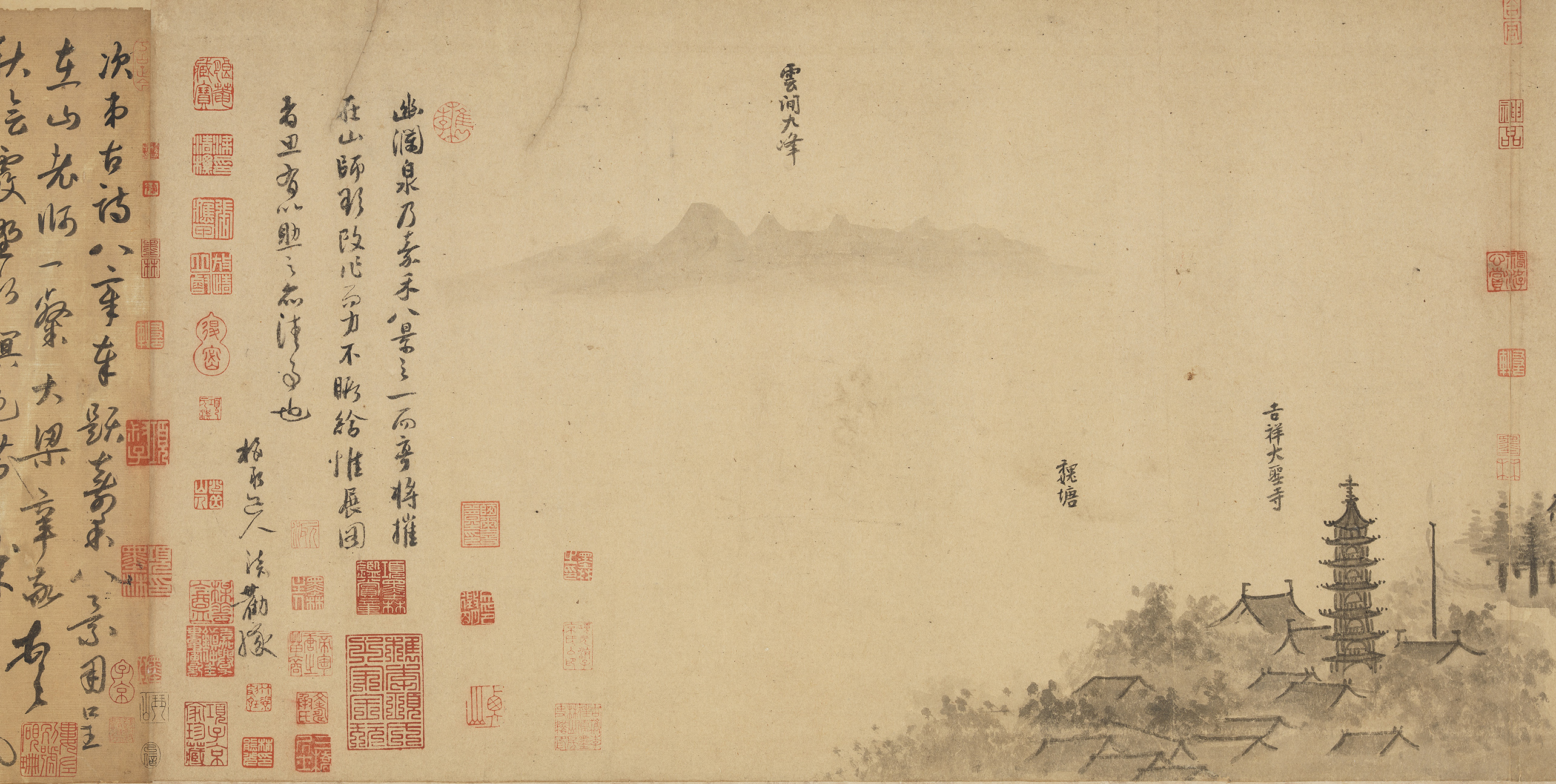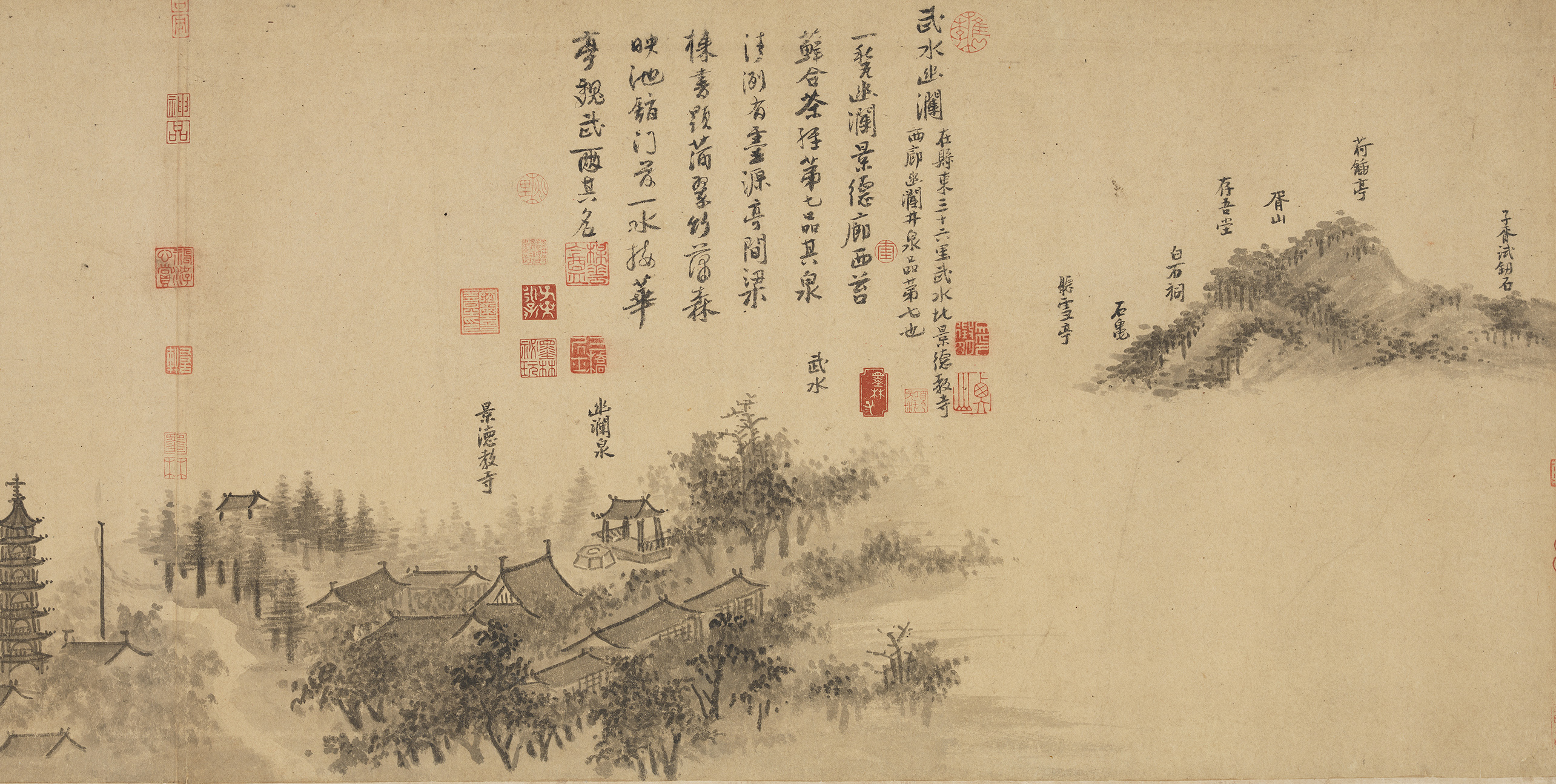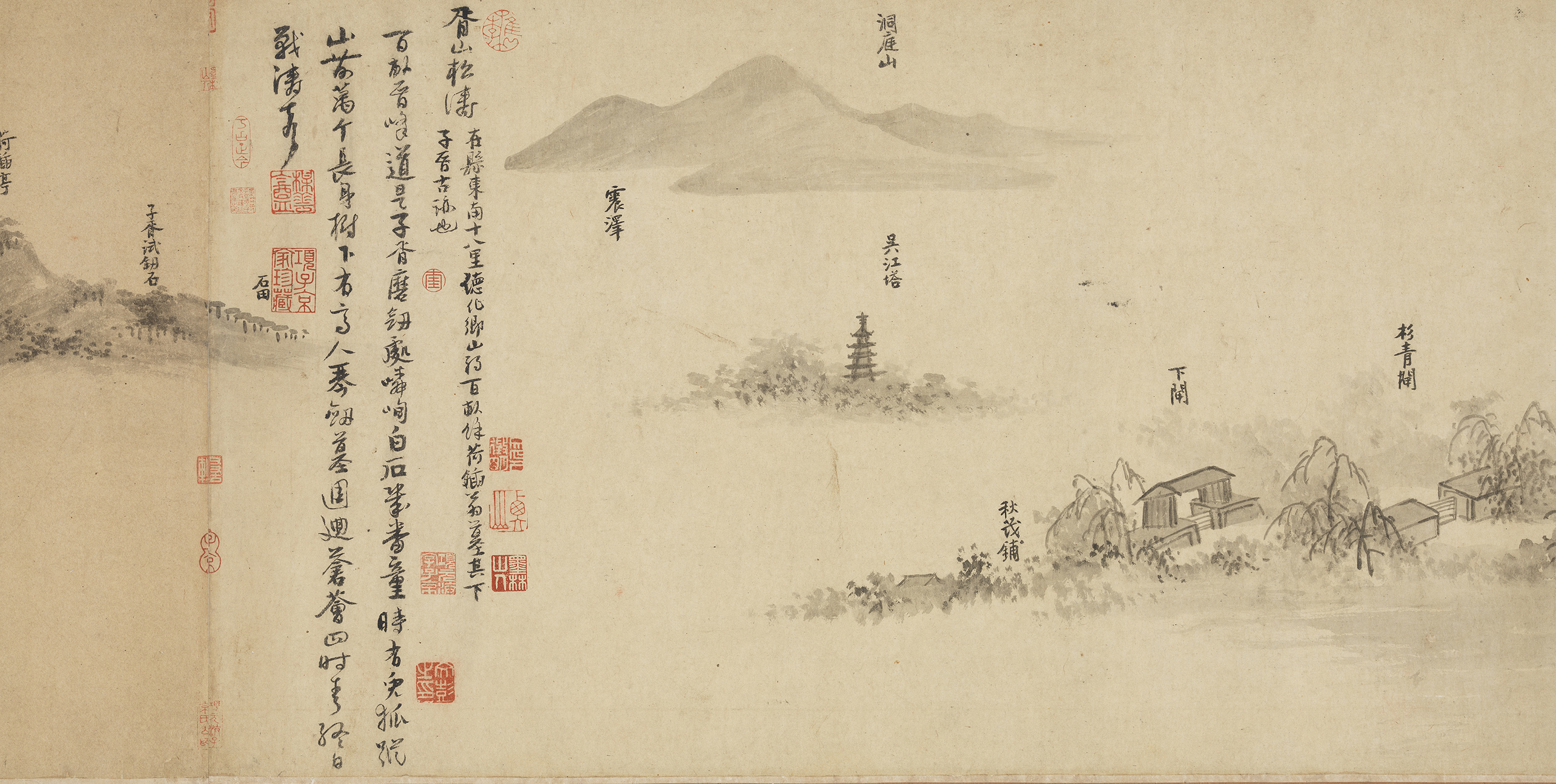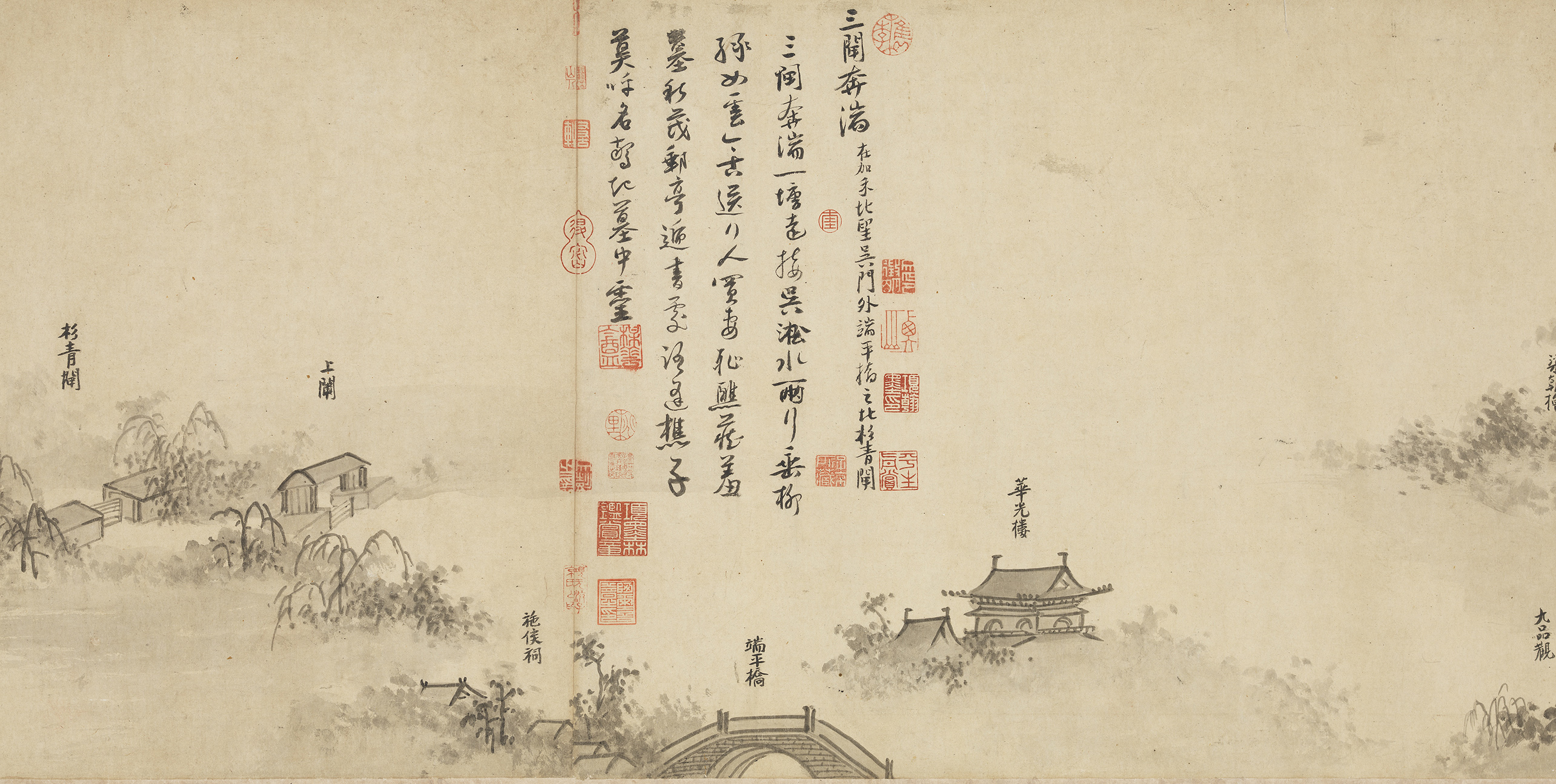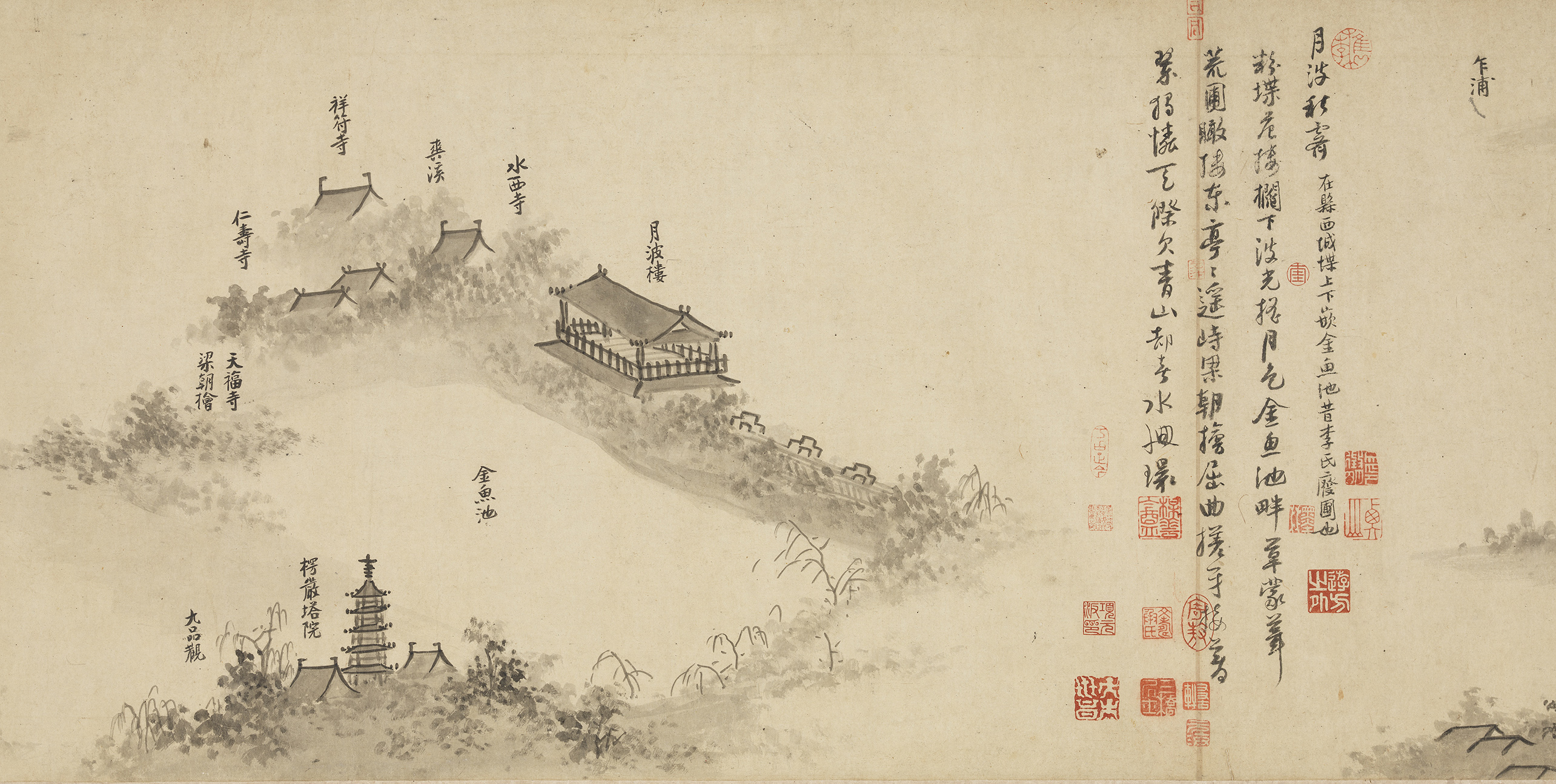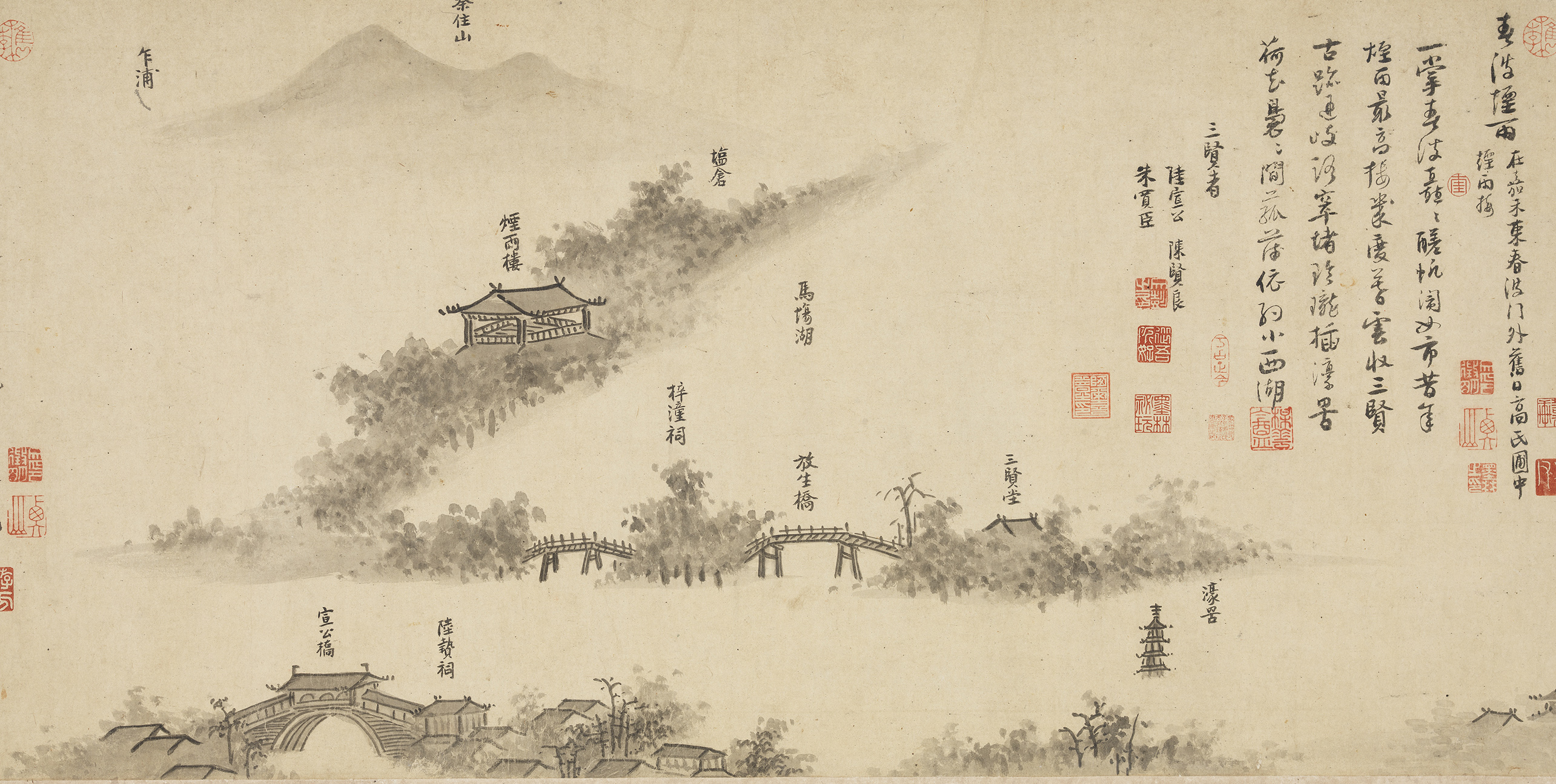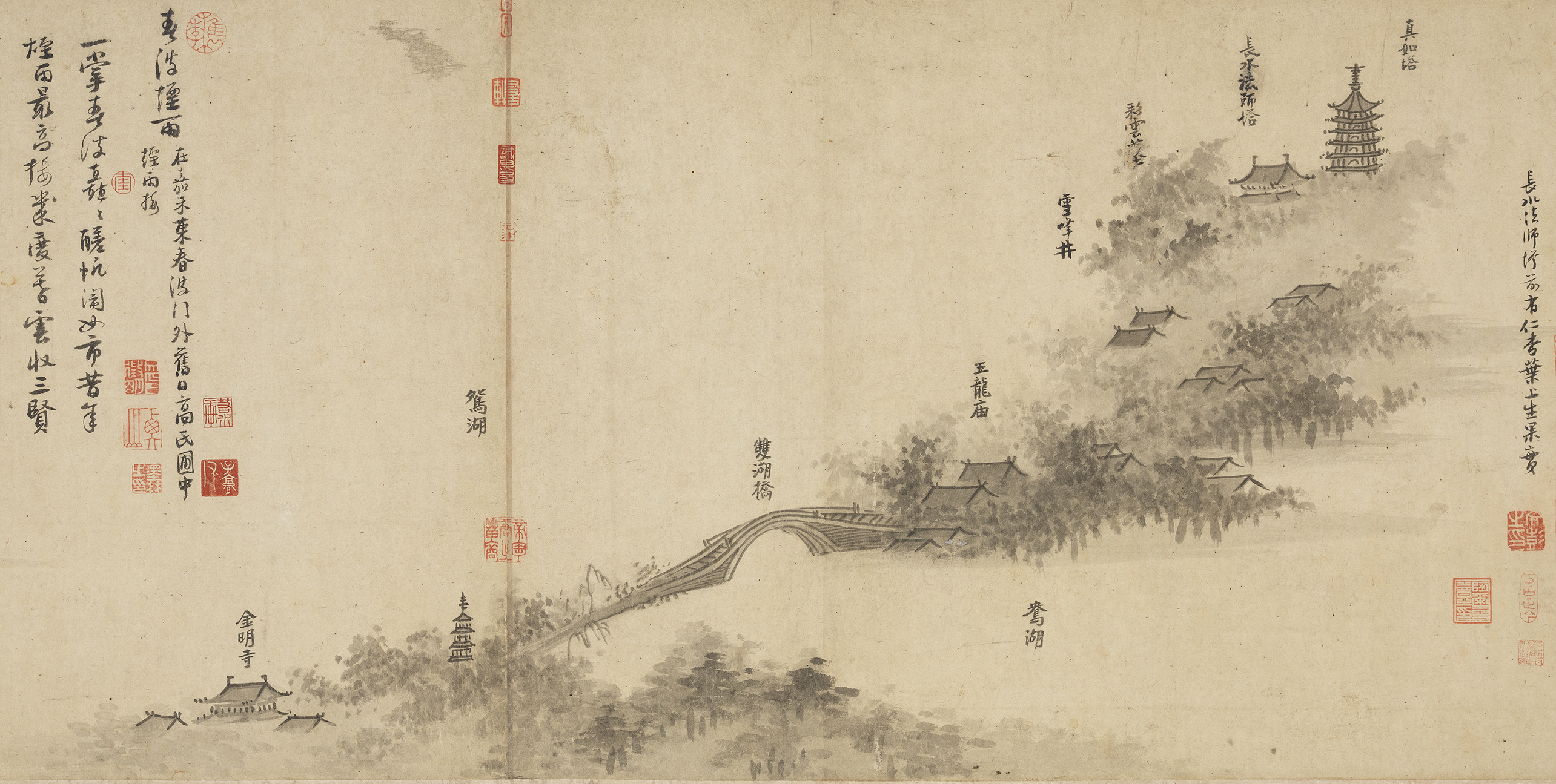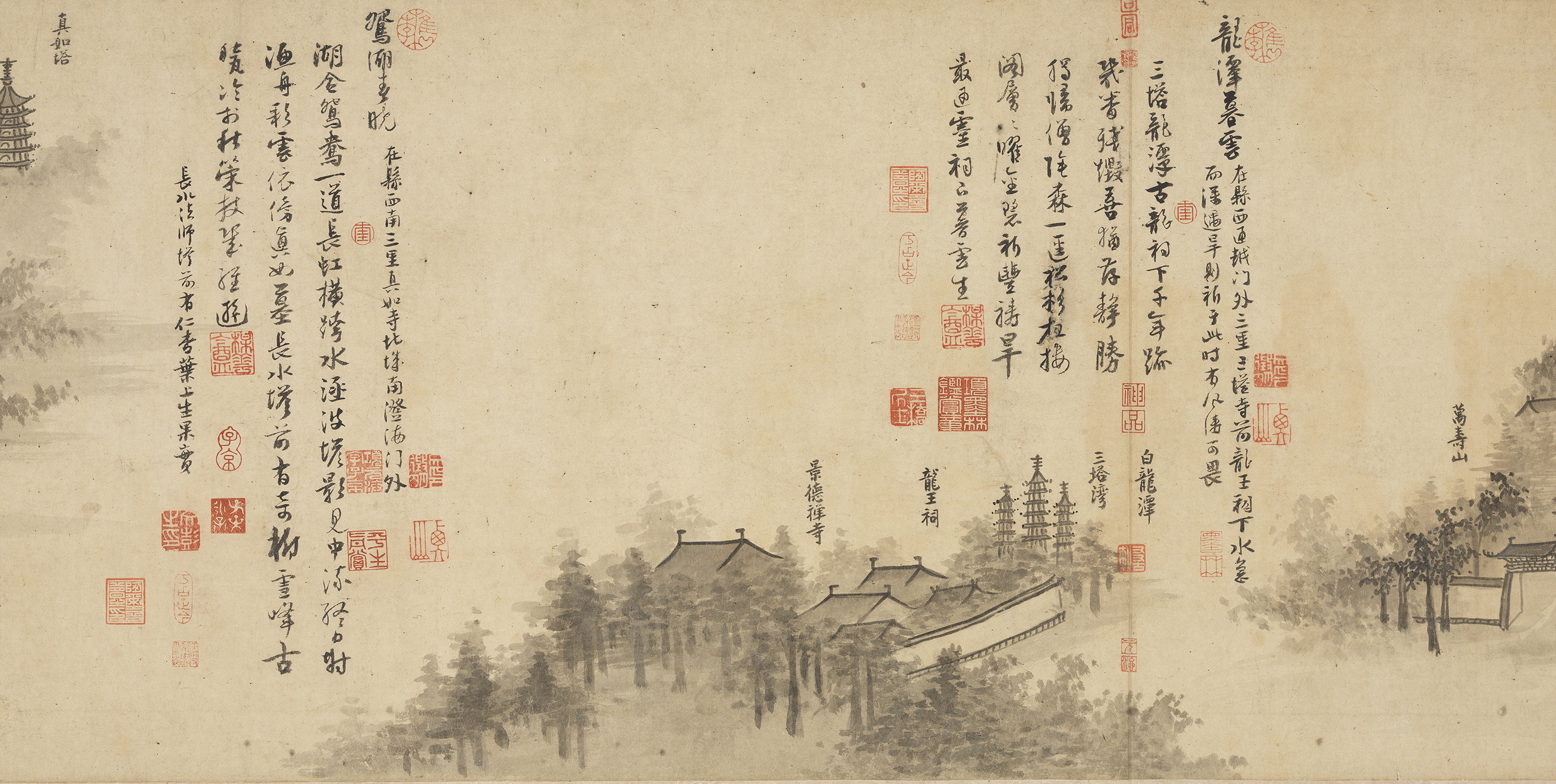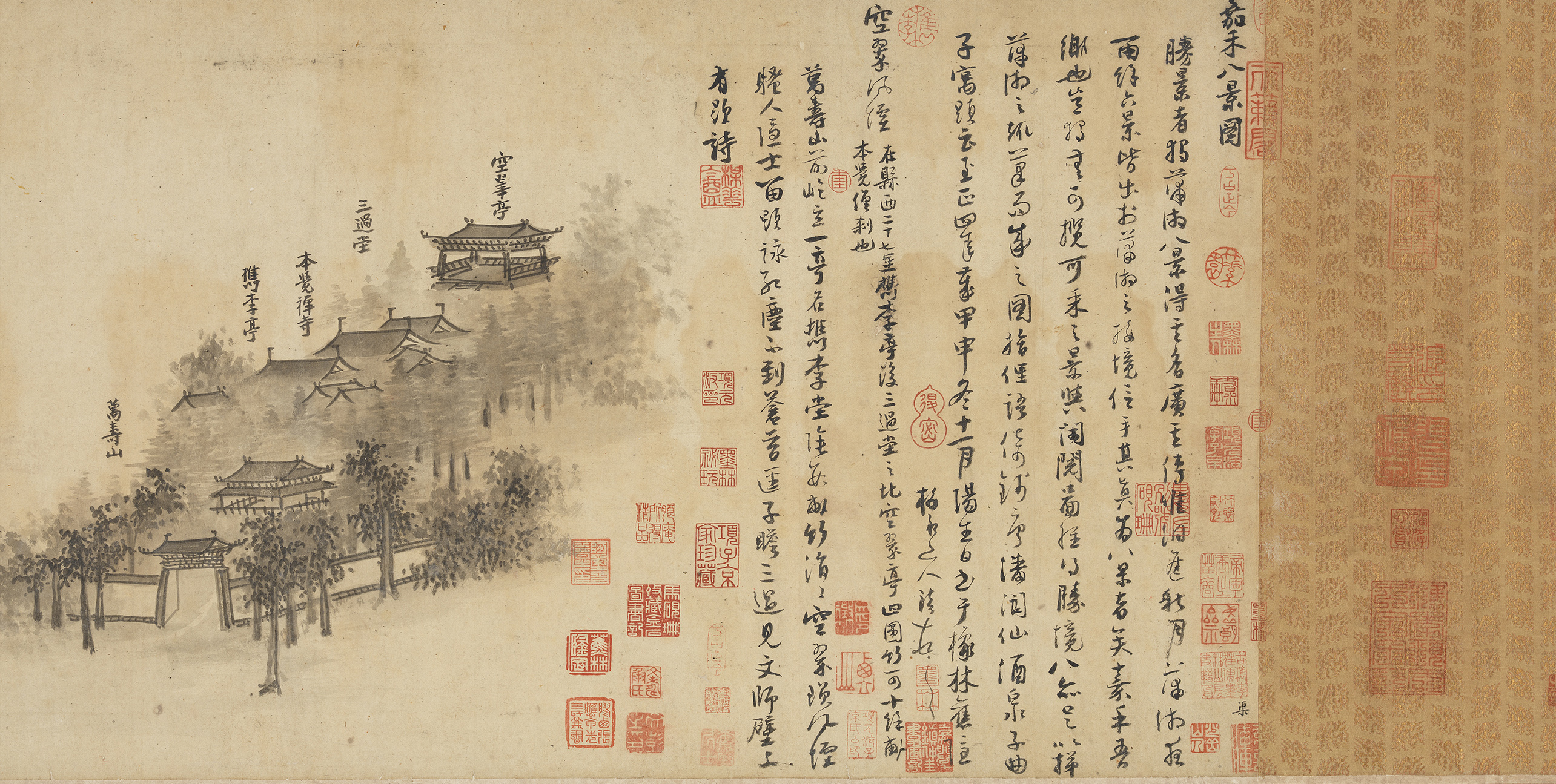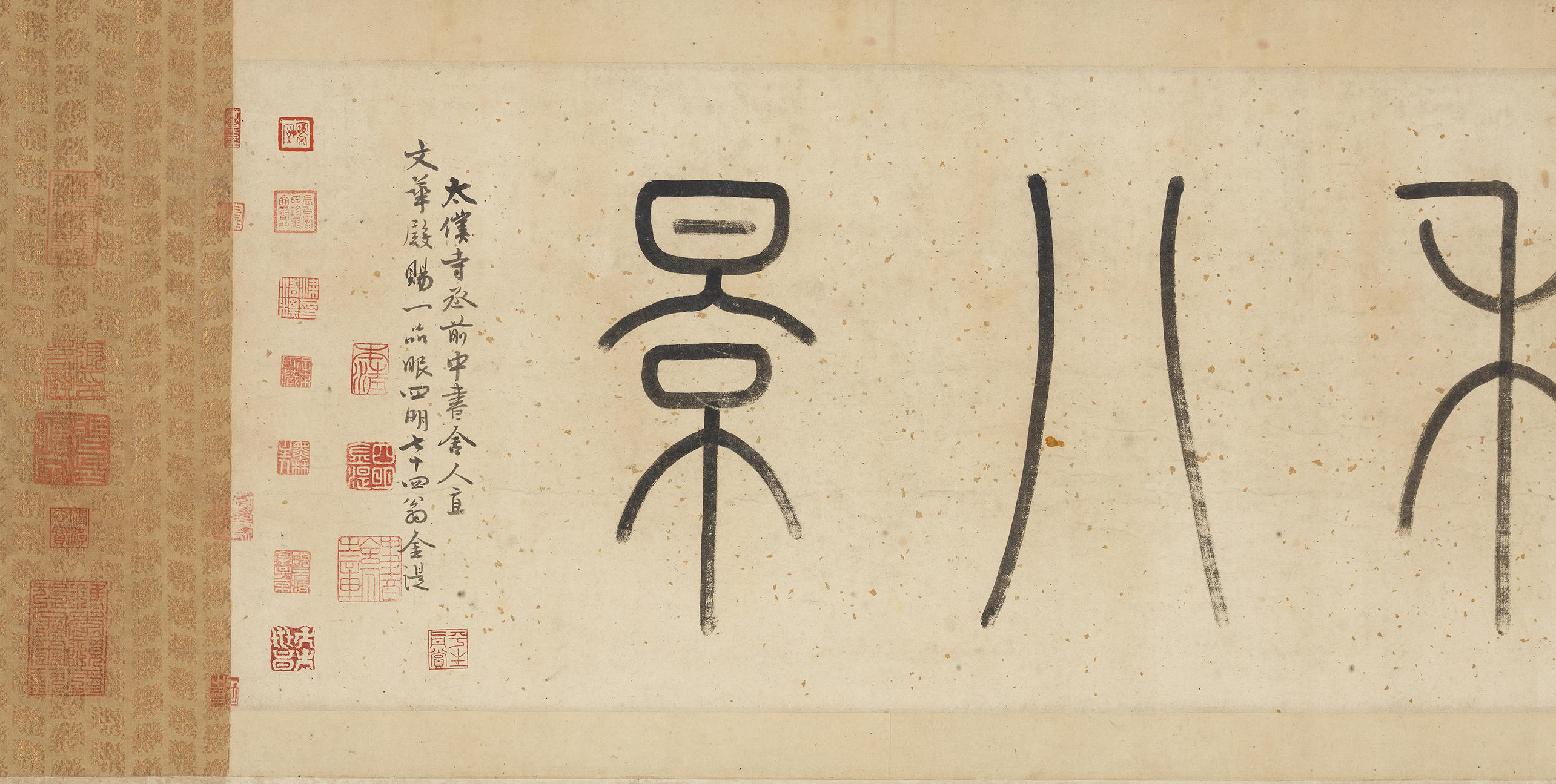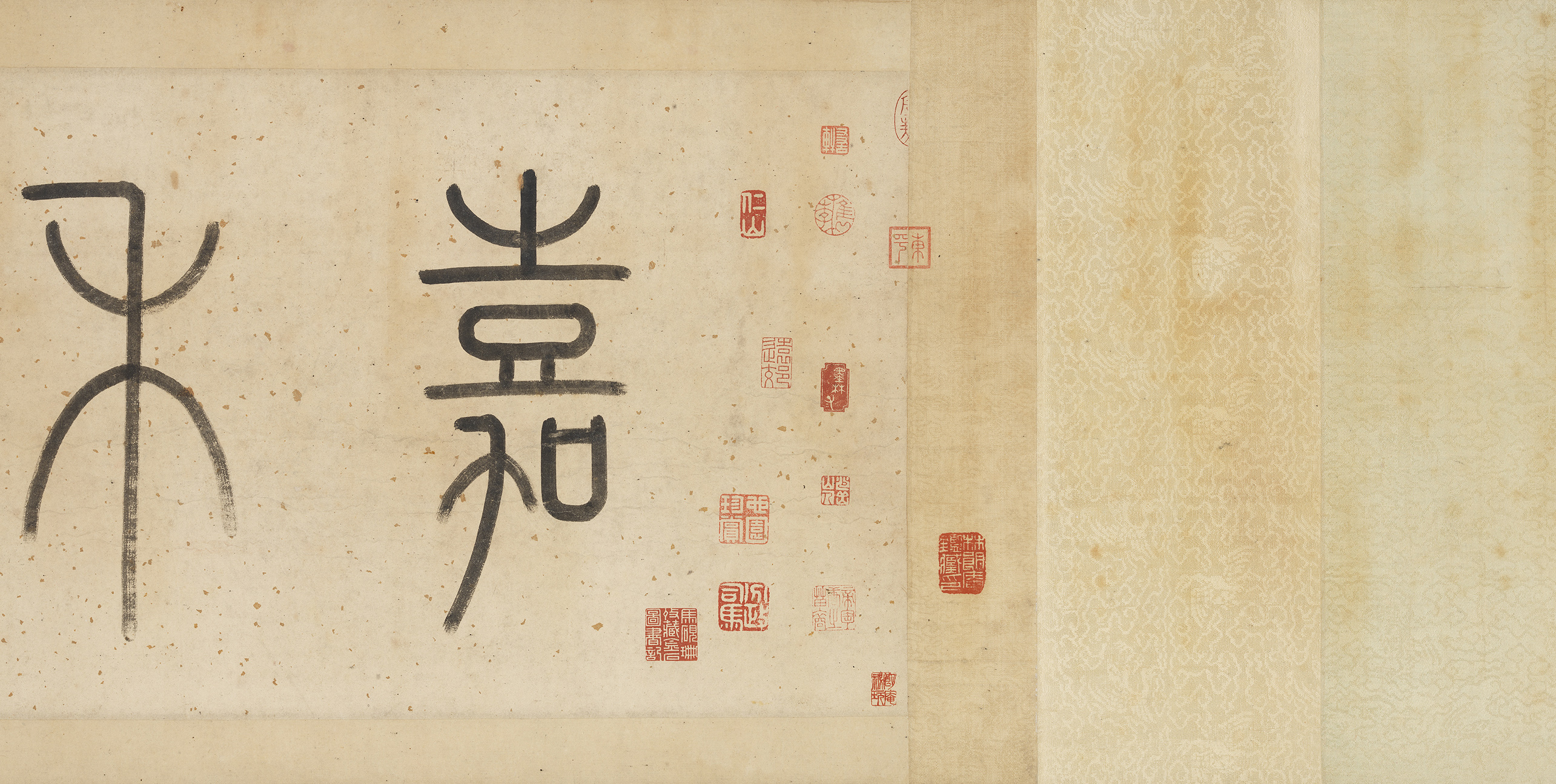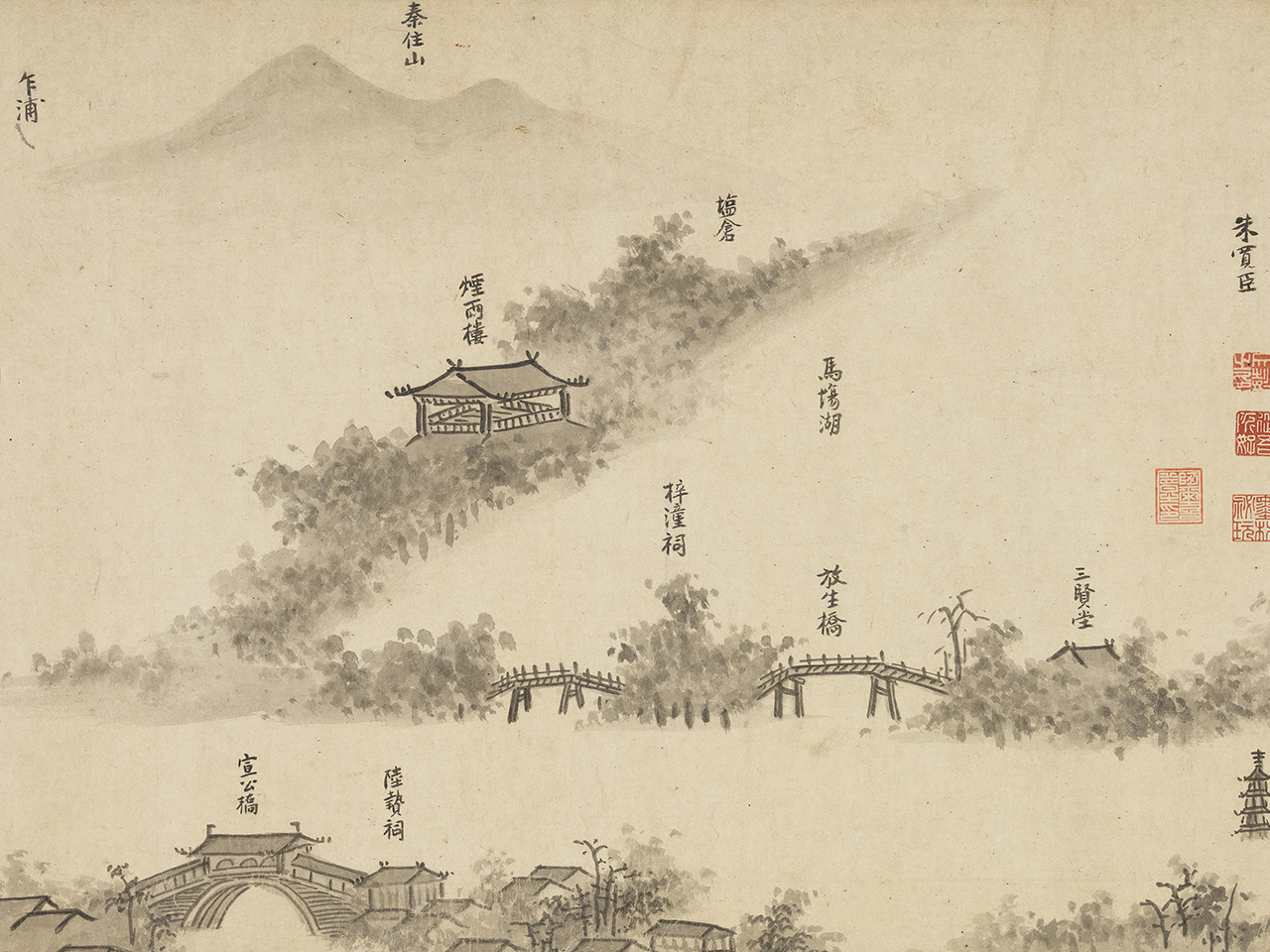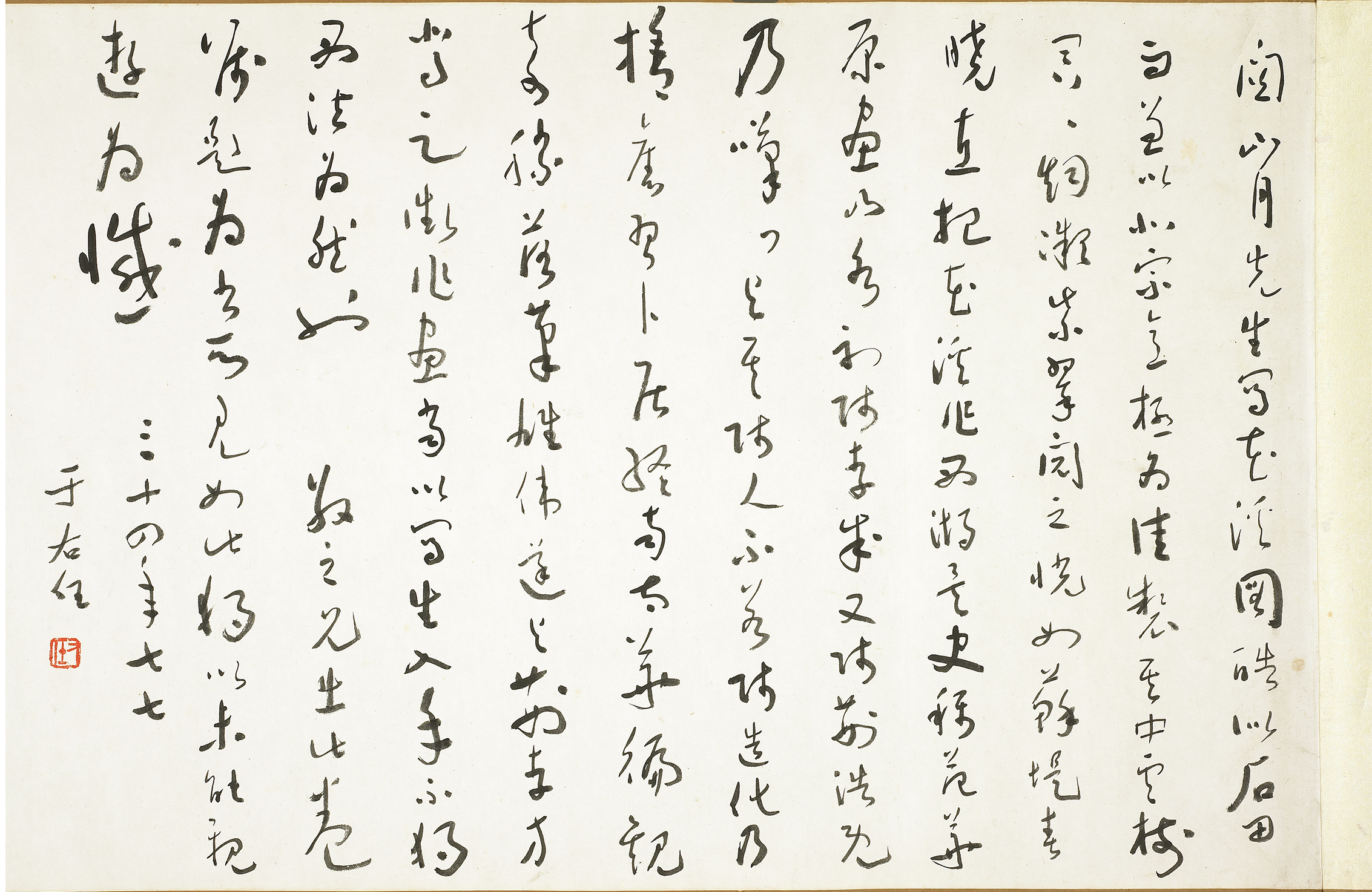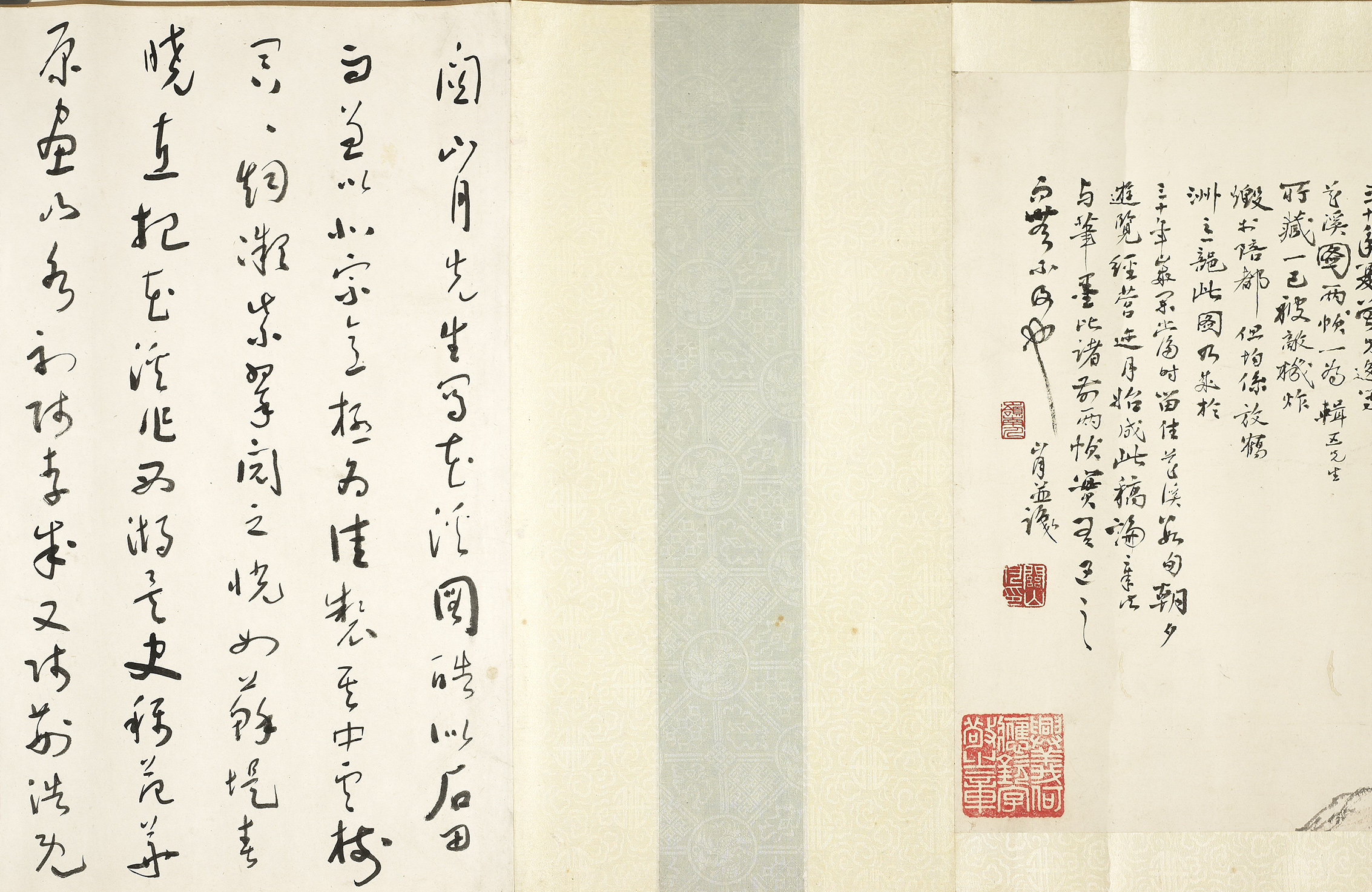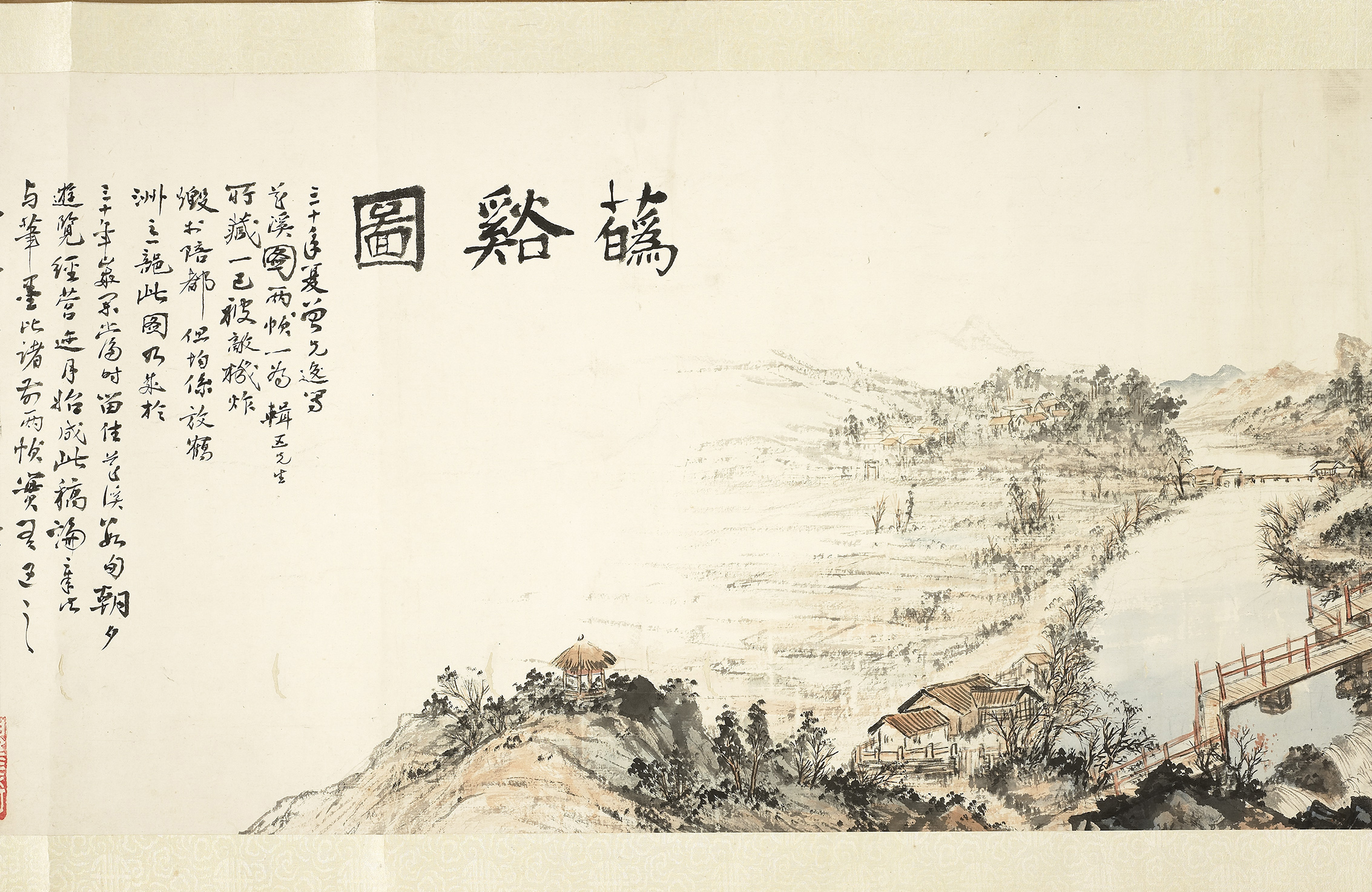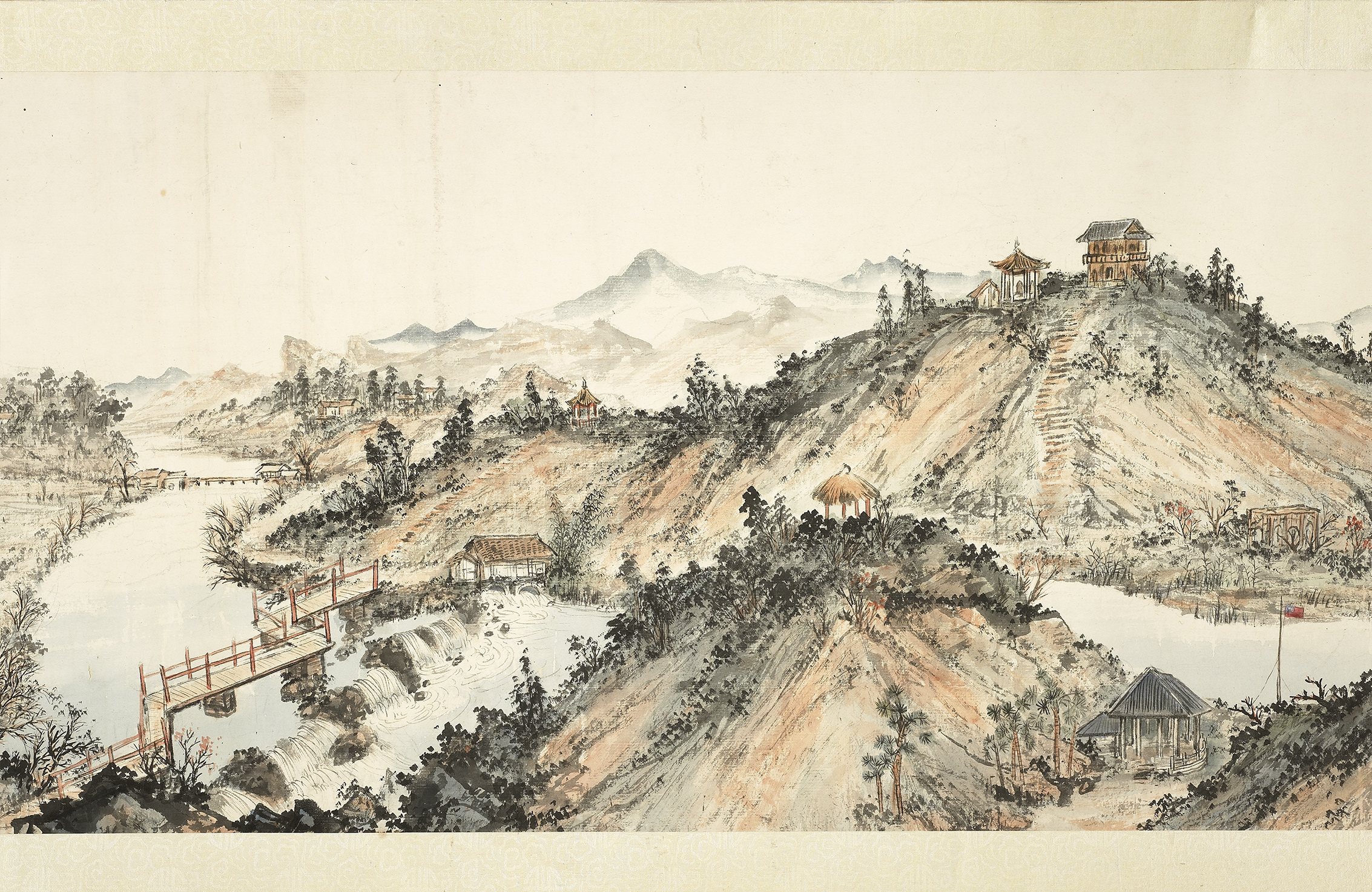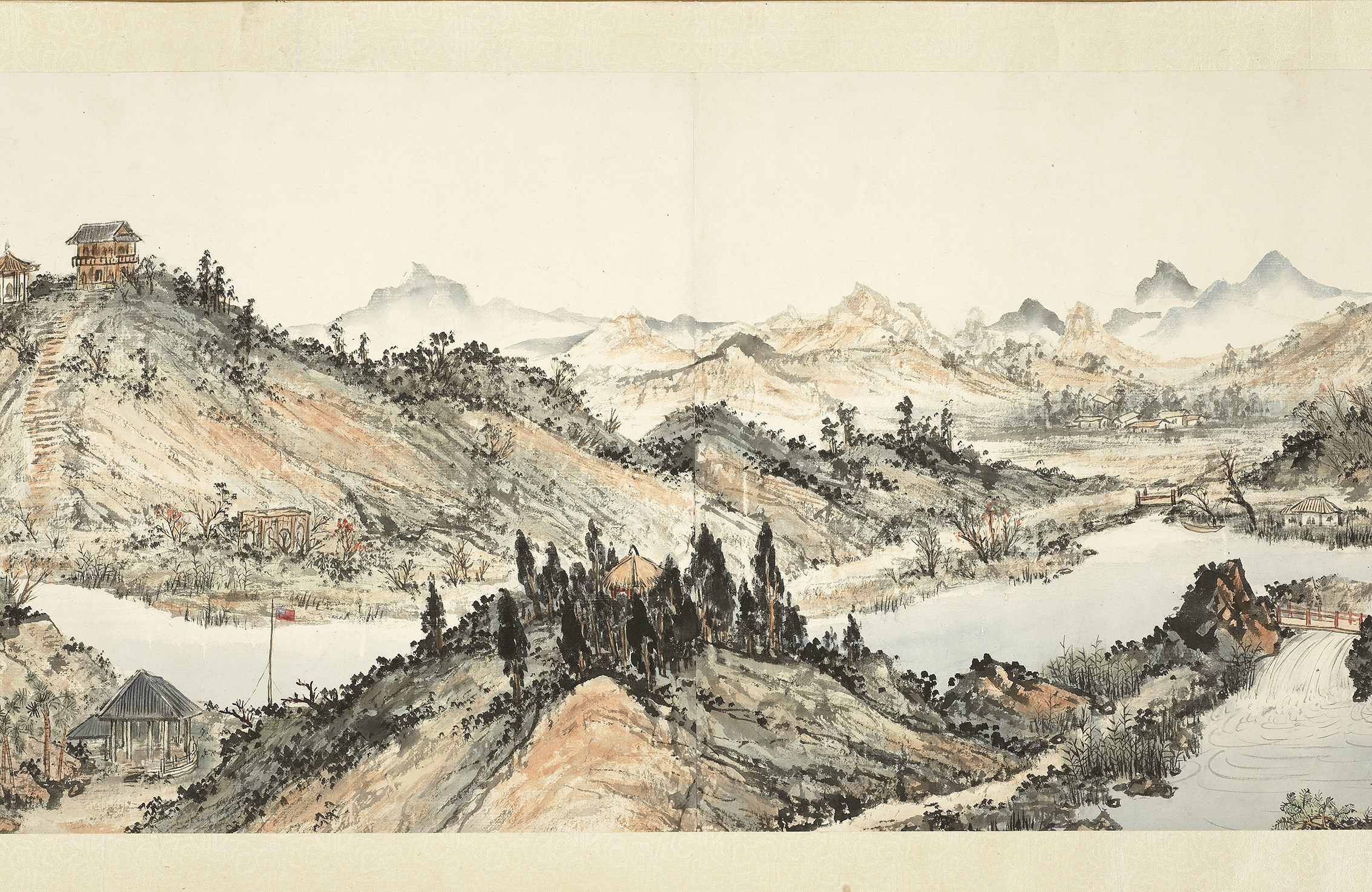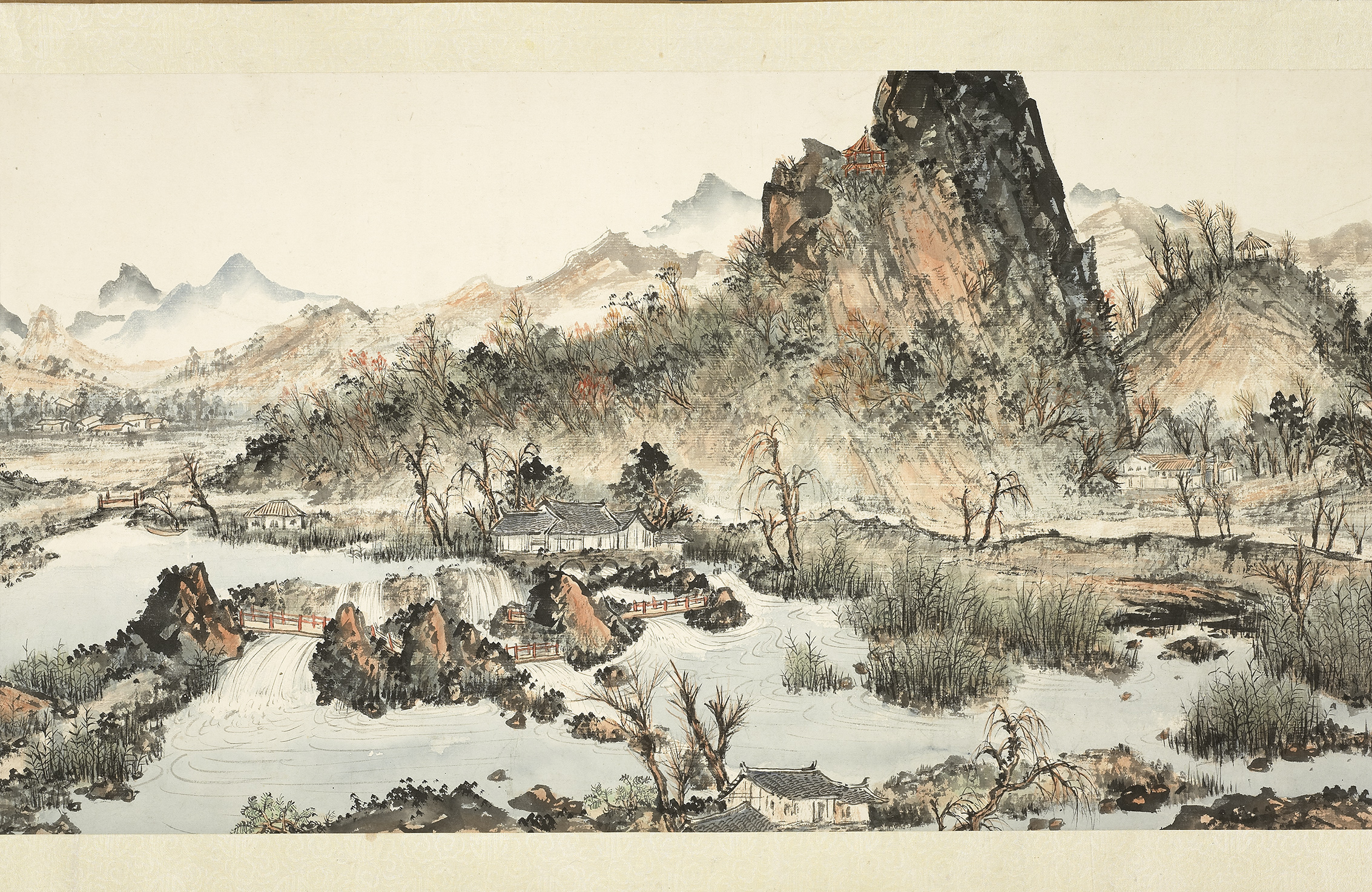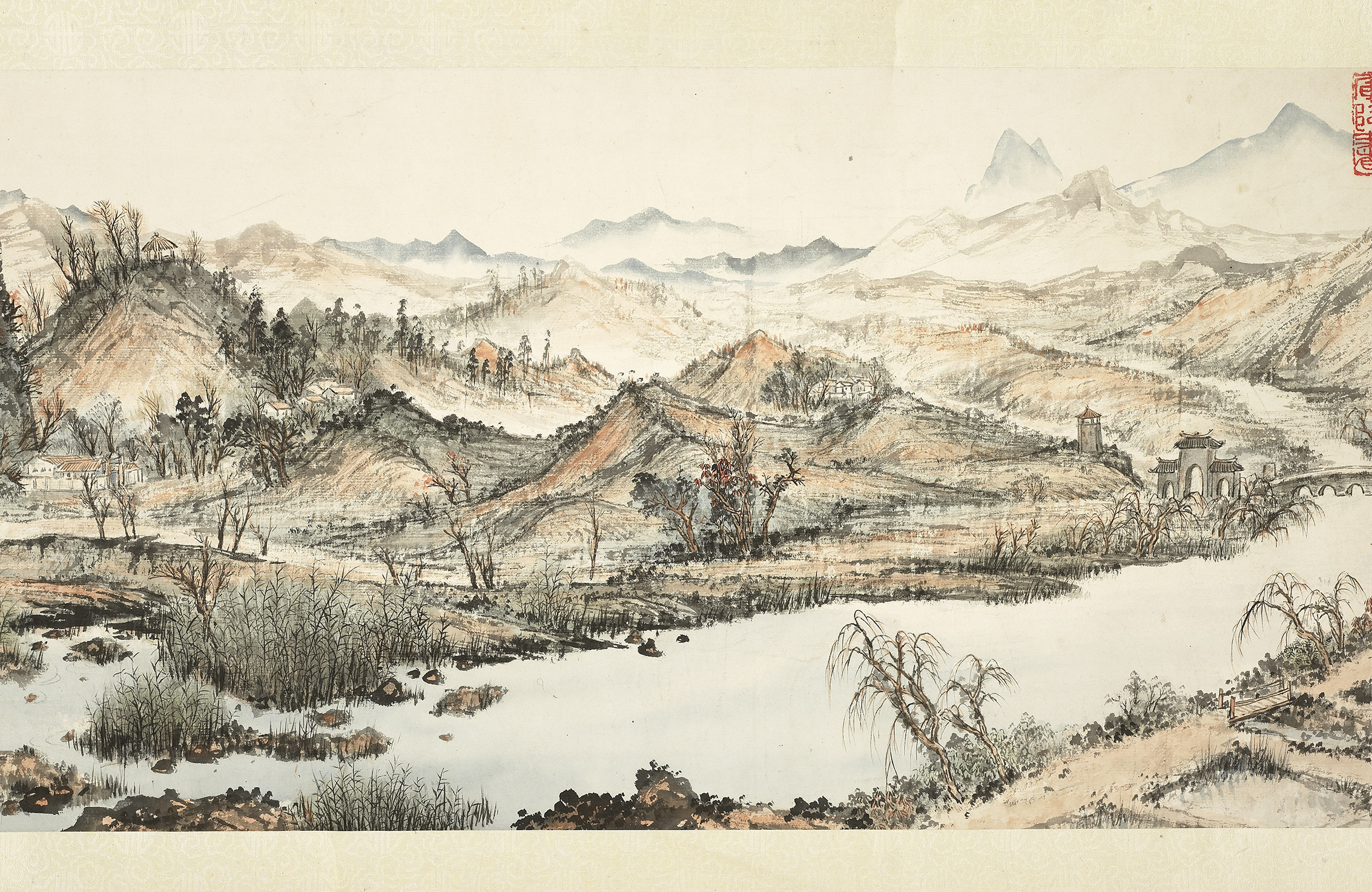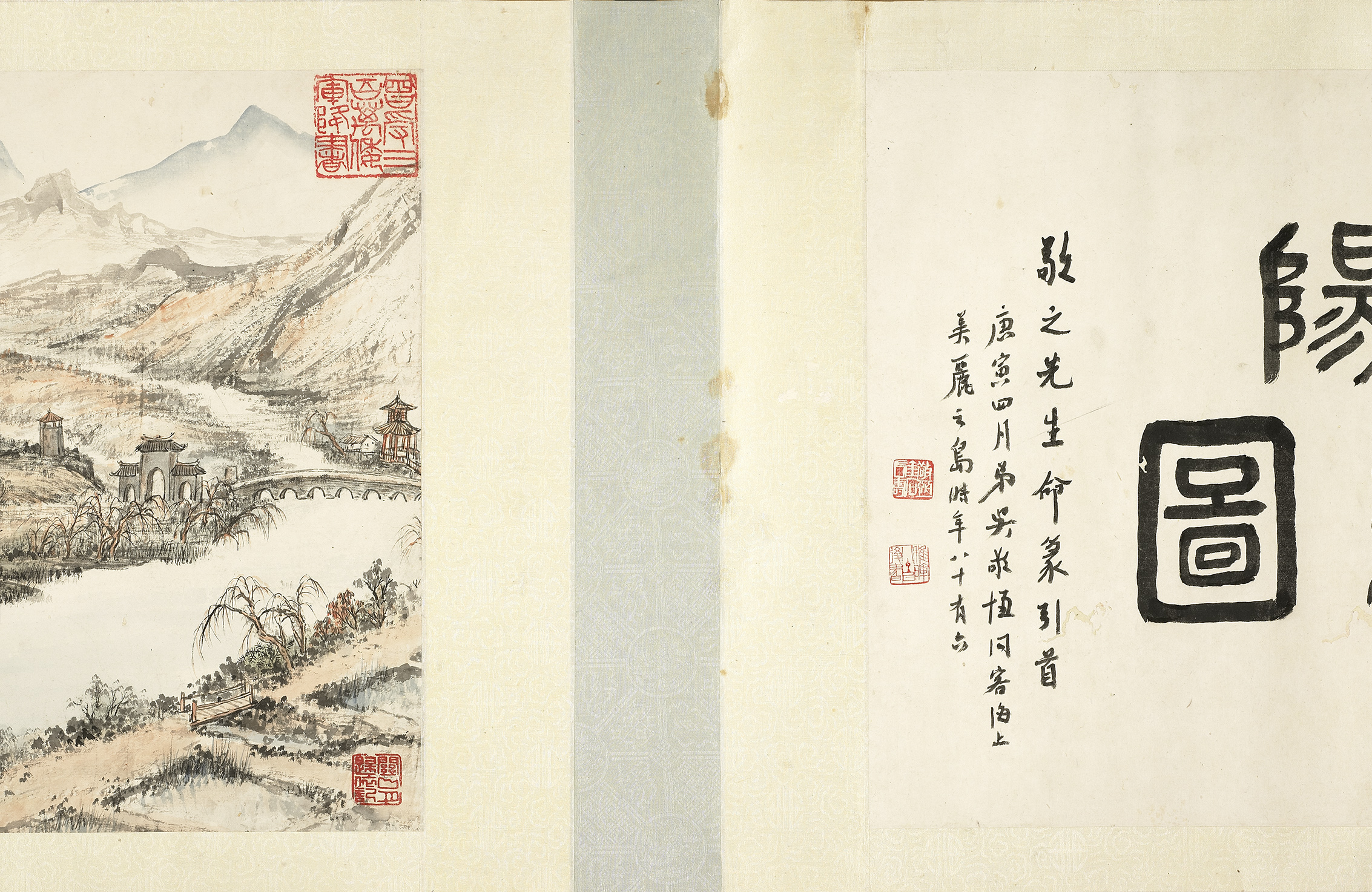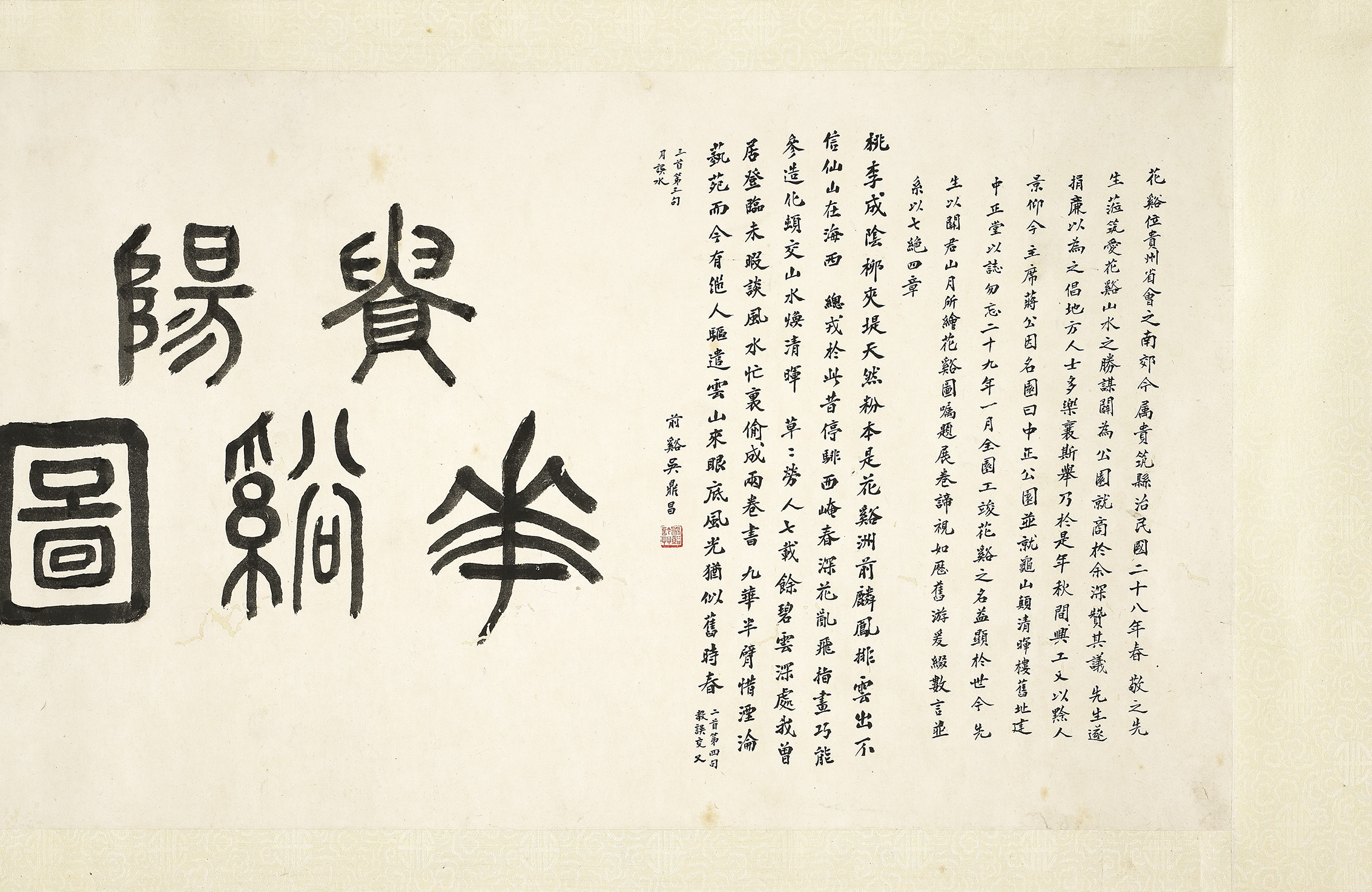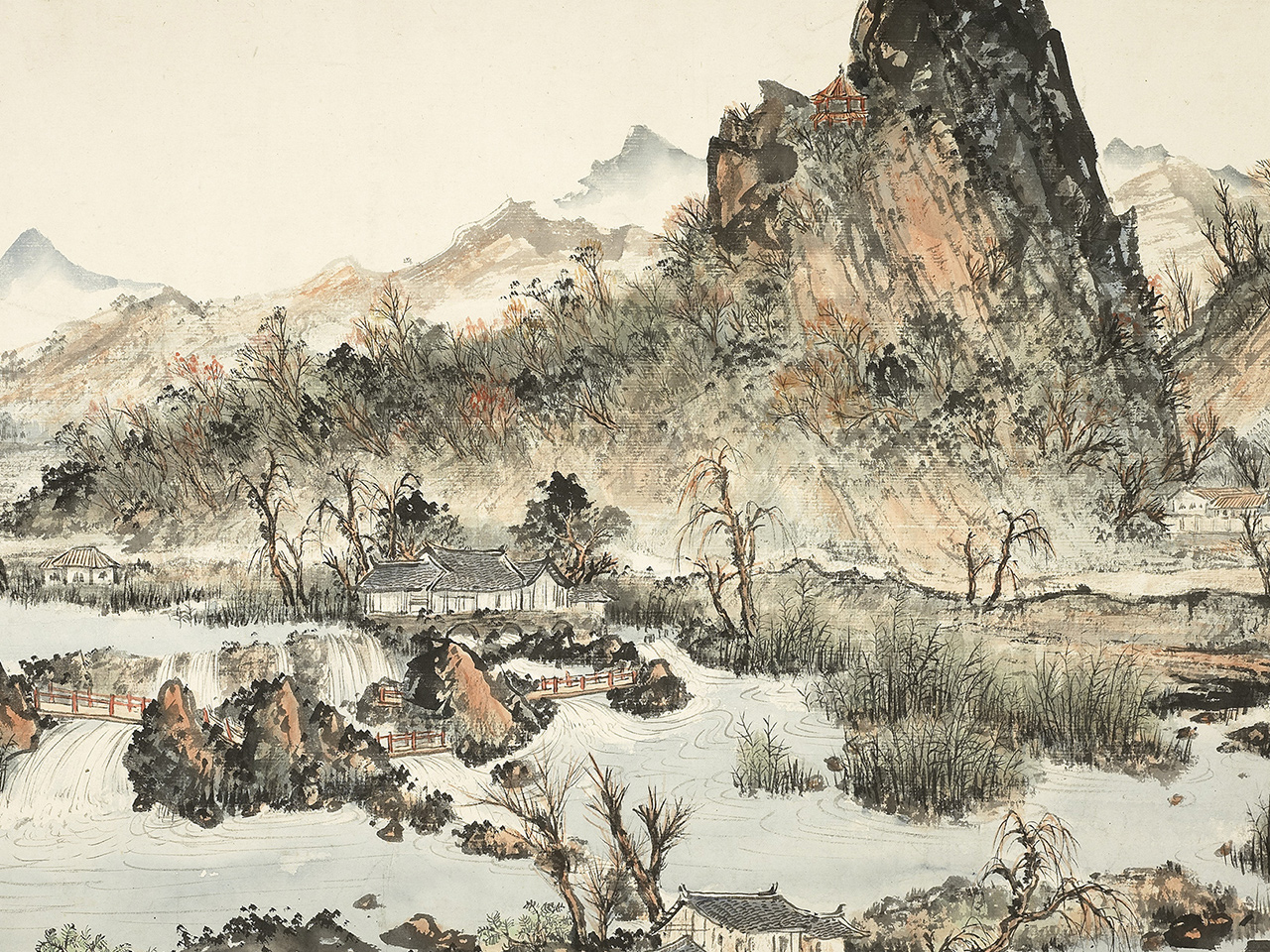Style Versus Scenery
Can the actual appearance of a scenic view help determine the style of its depiction? Or can the style of painting itself create the feeling of "being there"? Back in the Yuan dynasty, Wu Zhen (1280-1354) in his "Eight Views of Jiahe" intentionally employed simplified images and large areas of void to render eight scenic sites of the Jiaxing area, with generalized river bridges and temple pagodas here and there among the clouds and mists. And then, in more modern times, the Lingnan School painter Guan Shanyue (1912-2000) in his "Huaxi at Guiyang" chose to use dense dabs of the brush and a continuous composition to present Huaxi Park in the city of Guiyang, making the viewer feel actually there to follow the winding stream enveloped by the scenery of the park. Wu Zhen's format conforms to the traditional pictorial schema of the "Eight Views of Xiao and Xiang" from the Song dynasty, while Guan Shanyue's approach uses elements of Western perspective to give it concrete space. Which tradition more suitably captures the appearance and essence of the actual scenery?
-
Eight Views of Jiahe
- Wu Zhen (1280-1354), Yuan dynasty
- 37.5 x 566 cm
- Donated by Chang Wei-chen (wife of Lo Chia-lun)
Wu Zhen (style name Zhonggui, sobriquet Meihua daoren), a native of Jiaxing in Zhejiang, was gifted at using ink in his paintings and ranked along with Huang Gongwang (1269-1354), Ni Zan (1301-1374), and Wang Meng (1308-1385) as one of the Four Yuan Masters.
This handscroll is dated to 1344 and follows the precedent of the "Eight Views of Xiao and Xiang" from the Northern Song period (960-1127) to depict eight scenic sites in the area of Jiaxing (also known as Jiahe). The places throughout the painting feature written labels, with the artist also employing blank spaces to connect them together. Wu Zhen furthermore used the relative positions of the sites to arrange them into this composition. The brushwork is loose and the quality of ink full and brimming to impart a sense of spirit and unrestraint to the remote-looking scenery.
-
Huaxi in Guiyang
- Guan Shanyue (1912-2000), Republican period
- 44.8 x 347.2 cm
- Donated by the Ministry of National Defense (bequest from Ho Ying-chin [Ching-chih])
Guan Shanyue (original name Zepei) was a native of Yangjiang in Guangdong. A disciple of Gao Jianfu (1879-1951), founder of the Lingnan School of painting, Guan was profoundly influenced by Gao's method of syncretizing Chinese and Western ideals in art.
This handscroll is dated to 1941 and depicts Huaxi Park in the city of Guiyang, Guizhou Province. It begins at the right with Huaxi Bridge and passes by Fanghezhou ("Crane Release Shoals"), Linshan ("Kylin Mountain"), Guishan ("Turtle Mountain"), and Fengshan ("Phoenix Mountain") before going by a dam and up the bridge to Sheshan ("Snake Mountain"). The painting employs a handscroll format to map out and depict a travel route for the viewer. And the method of perspective for the distant scenery creates a sense of actual space, making the viewer feel as if personally experiencing the scenery there.
